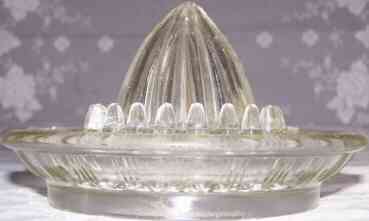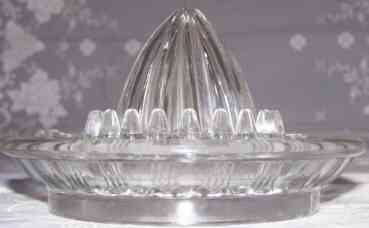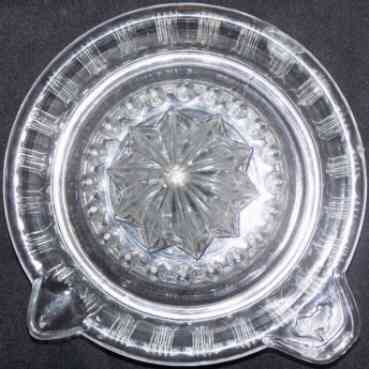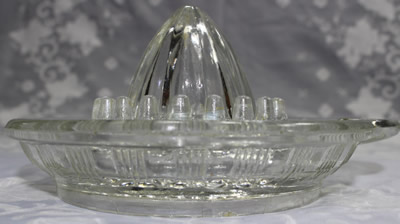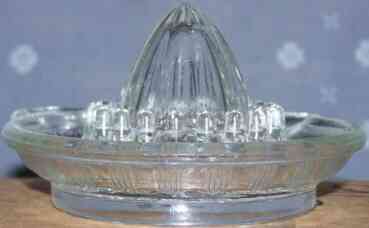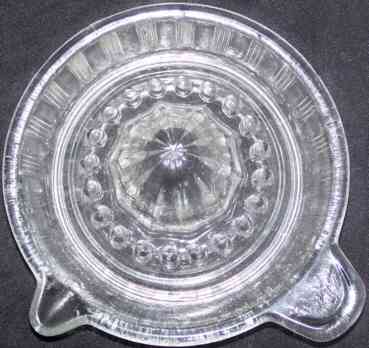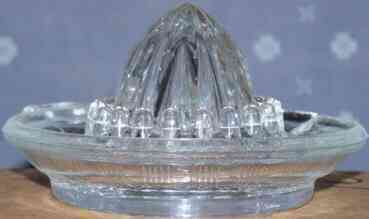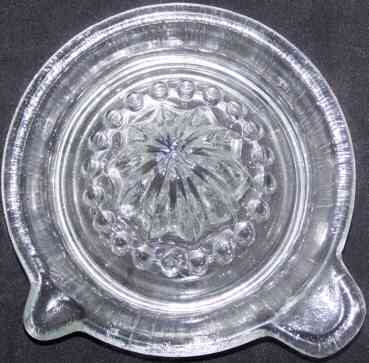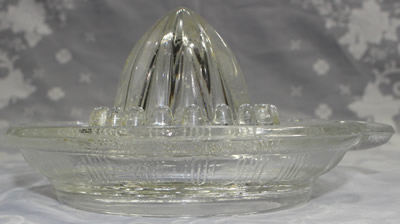End View
Shows size and profile of the reamer |
Top View
Shows the orientation of the reamer ridges to, and their distance from, the pip collectors |
|
Type
1 - Depression period
 |
Small
reamer (cone). |
 |
Ridges
of the reamer point between the pip collectors. |
 |
This
type may or may not have
mould numbers. |
|
|
|
| |
|
Type
2 - Depression period
 |
Small
reamer (cone), although bigger than Type 1. |
 |
Ridges
of the reamer point between the pip collectors and the
ridges of the reamer are larger and sharper, and finish closer
to the pip collectors |
 |
This
type may or may not have
mould numbers. |
|
|
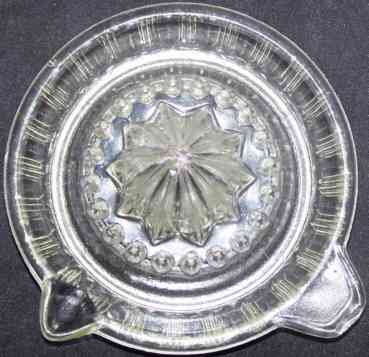
|
| |
|
Type
2a - Depression period
 |
Small
reamer (cone), although bigger than Type 1. This type is very
similar to type 1. |
 |
Ridges
of the reamer point between the pip collectors and
the ridges of the reamer are larger and sharper, and finish closer
to the pip collectors |
 |
This
type may or may not have
mould numbers. |
 |
There
is an embossed (raised) map of Australia
on the thumb grip. |
|
|
|
| |
|
Type
3 - Depression period
 |
Small
reamer (cone). |
 |
Flat
area between the reamer and the pip collectors. |
 |
Ridges
of the reamer point at the pip collectors. |
 |
This
type may or may not have
mould numbers. |
|
|
|
| |
|
Type 4
 |
Middle
size reamer (cone). |
 |
Sloping
area between the reamer and the pip collectors. |
 |
Ridges
of the reamer point at the pip collectors. |
 |
This
type has not been seen with
mould numbers. |
|
|
|
| |
|
Type 5
 |
Large
reamer (cone). The reamer touches the bases of the pip collectors. |
 |
Sloping
area between the reamer and the pip collectors. |
 |
Ridges
of the reamer point at (and touch) the pip collectors. |
 |
This
type has not been seen with
mould numbers. |
 |
Heavier
than the previous types. |
 |
You cannot stack this type as the large cone doesn't fit into the next juicer. |
|
|
|
| |
Type 6
 |
Large
reamer (cone). The reamer touches the bases of the pip collectors. |
 |
Sloping
area between the reamer and the pip collectors. |
 |
Ridges
of the reamer point at (and touch) the pip collectors. |
 |
Rim, tab handle and pouring spout have a distinct speckled finiish. |
 |
This
type has not been seen with mould numbers. |
 |
Heavier
than the other types. |
 |
You cannot stack this type as the large cone doesn't fit into the next juicer. |
|
|
|
Crown Crystal Glass documentation of changes |
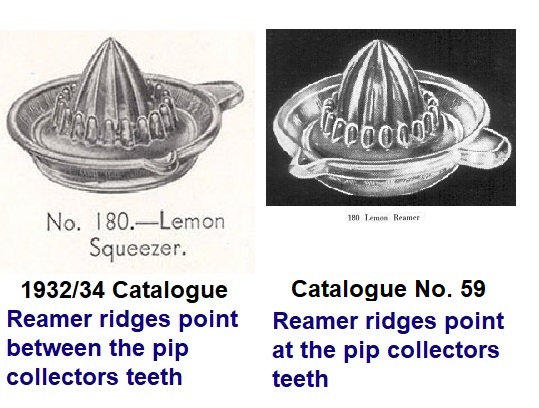
Also note the relative size and shape of the reamers (cones)
Catalogue No. 59 is thought to be late 1940s to early 1950s
|
| |
|





